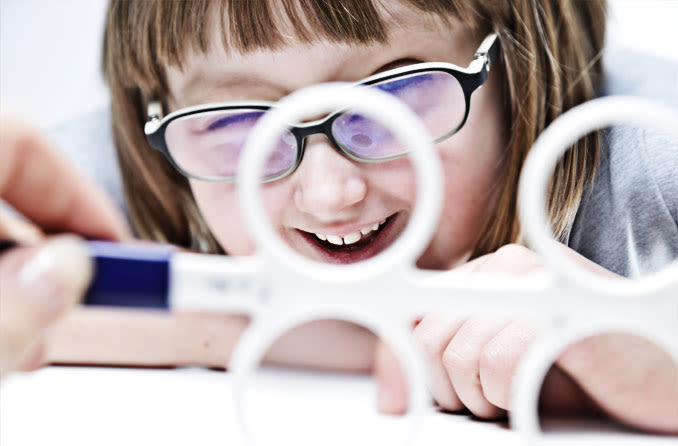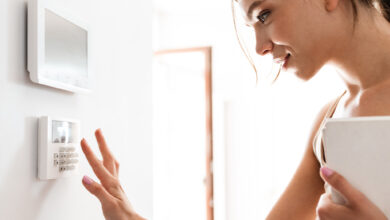Are you seeking for a workable solution to your vision issues that won’t require you to make regular trips to the eye doctor because you’re sick of struggling with them? There is no better option than at-home vision therapy! This in-depth manual will go through all the advantages of this novel strategy, including increased cognitive performance, better visual acuity, less eyestrain and headaches, and much more. At-home vision therapy may be just what you need, whether you’re struggling with a specific ailment like amblyopia or just want to improve your overall eye health. In order to learn everything there is to know about this fascinating alternative to conventional treatments, keep reading!
What is At-Home Vision Therapy?
At-home vision therapy is a type of rehabilitation that can be used to improve visual function. It often consists of exercises and activities designed to improve eye movement, eye coordination, and focus.
Benefits of At-Home Vision Therapy
The advantages of at-home vision therapy are numerous. The first benefit is that you can complete it whenever it is convenient for you. Second, the cost is typically lower than that of conventional outpatient therapy. Third, finishing the entire programme will increase your chances of success. Fourth, you can modify the programme to meet your individual requirements. Fifth, you can continue to apply the techniques you pick up in treatment to your daily activities.
At-home vision therapy is a great way to improve your vision and quality of life. It is important to consult with an eye care professional before beginning any type of therapy to ensure it is right for you.
How to Do At-Home Vision Therapy
Your eye doctor may suggest vision therapy if you or your child has been diagnosed with a vision issue. Vision therapy is a sort of medical care that makes use of particular exercises and activities to enhance visual abilities. Amblyopia (lazy eye), strabismus (crossed eyes), and other conditions affecting binocular vision are frequently treated with it.
There are numerous at-home options for vision rehabilitation, even if some programmes are run in an office setting. An easy and practical option to enhance your vision is through at-home vision treatment.
Here are some tips for doing at-home vision therapy:
- Adhere to your eye doctor’s advice. Ask your eye doctor for advice on how to perform vision rehabilitation at home. They’ll be able to provide you with detailed instructions depending on your unique requirements.
- Schedule regular sessions. Setting aside time each day to complete the exercises is crucial for at-home vision therapy to be successful. Pick a time that works for you and try to keep to it as much as you can.
- Establish a special area. Making a special area for at-home vision treatment sessions can be beneficial. This will enable you to concentrate and work without interruptions while performing the workouts.
- Use the proper equipment. Be sure to use any special equipment recommended by your eye doctor during at-home vision therapy sessions. This may include
Tips for Doing At-Home Vision Therapy
Your doctor could suggest at-home vision therapy if you or your kid has been identified as having a vision issue. Vision therapy is a sort of medical care that makes use of unique eye-improving exercises and activities.
Home vision therapy can be a useful method for treating a variety of vision issues and enhancing eyesight. When using at-home vision therapy, it’s crucial to heed your doctor’s advice and instructions. Here are some pointers for performing eye treatment at home:
- Comply with your doctor’s orders: When performing at-home vision therapy, be sure to abide by your doctor’s recommendations. By doing so, you can be sure that you are performing the exercises properly and reaping their full benefits.
- Regularly perform the exercises: Regularly performing the exercises is necessary for the exercises to be effective. Try to perform the exercises daily, or as frequently as your doctor instructs.
- Exercise patience: At-home vision therapy won’t provide effects right away. You might have to wait many weeks or even months before you see a change in your vision. Even if you don’t notice results immediately away, have patience and keep doing the exercises.
- Practice good eye health habits: In addition to doing at-home vision therapy, there are also things you can do on a daily basis to help improve your eyesight. These include eating a healthy diet, getting enough sleep
Equipment Needed for At-Home Vision Therapy
If you’re considering at-home vision therapy, there are a few things you’ll need to get started. Below is a list of essential equipment you’ll need to complete your therapy exercises:
- An internet-connected computer or tablet. You can use these tools and exercises offered by your therapist online from this location.
2. A printer. Some of the exercises or resources that your therapist gave may need to be printed out.
- A deck of cards. You’ll utilise these in a number of tasks to hone your visual processing abilities.
- A set of resistance bands or weights. These will be employed in exercises to strengthen the eye muscles.
- Some tiny things, such as a set of ping pong balls. Exercises involving tracking and attention will make advantage of these.
- A set of blocks or other small objects. These will be used in binocular coordination and depth perception exercises
Safety Precautions for Doing At-Home Vision Therapy
Consider some safety measures if at-home vision rehabilitation is something you’re thinking about. Prior to beginning vision therapy, make sure you have a thorough eye exam from a licenced eye care professional to rule out any underlying conditions that might be made worse by it. Once your doctor has given the all-clear, keep in mind the following general safety advice:
- Carefully adhere to any guidance provided by your vision therapist or eye care specialist.
- Don’t strain your eyes too much; rest them if they become fatigued or strained.
- Keep an eye on your surroundings and abstain from any actions that could put you at risk for harm (such as utilising sharp objects close to your face).
With these safety precautions in mind, at-home vision therapy can be an effective way to improve your vision and address any related issues like lazy eye or double vision.
Alternatives to At-Home Vision Therapy
whether at-home vision therapy is something you’re thinking about, you might be wondering whether there are any alternatives. While many people find at-home vision therapy to be a fantastic option, it’s not appropriate for everyone. Here are some other choices to take into account:
Traditional vision therapy can be a better choice for you if you prefer to work with a professional in a clinical setting. This form of therapy can be tailored to meet your unique requirements and often entails more one-on-one time with a therapist.
- Eye workouts: You can enhance your vision by engaging in a variety of different eye exercises. These exercises can be performed at home or with a trained professional’s assistance.
- Nutrition and Diet: Your diet can have a significant impact on your vision. Good eye health depends on eating a balanced diet full of vitamins and minerals.
- Lifestyle Modifications: Modifying your way of living in a simple way can also assist your vision. Healthy eyesight depends on quitting smoking, getting enough sleep, and managing stress.
Conclusion
To sum up, at-home vision therapy can be a useful strategy for maintaining and enhancing eye health. People who might not have access to professional services locally or who just prefer the convenience of performing their own vision therapy at home will find it to be of particular benefit. Including this practise in your daily routine can help you maintain good eye health while also enhancing your overall wellbeing and visual performance.
Read More:- How to Showcase Your Human-Centered Design Skills in Your Portfolio





